A quick shout out to my friends over at permapeople.org whose mission is
To empower people to grow food to feed themselves, their families, and local communities while regenerating the environment.
Their website contains a modern and usable plant database (think Plants For A Future but brought into the present day), a market place where you can trade plants with other community members, a slick garden planner and more. They recently added a new feature to their plant database in which members can “adopt” a plant. I, of course, adopted Silverweed and also Nepal Cinquefoil.
What if I told you there was a cactus out there that preferred cooler temperatures? What if I told you that it needed significant amounts of rainfall in the winter?
It’s true. I was pretty sceptical, even after coming across this several times in my research on domesticating Prickly Pears (Opuntia sp.), but I’ve gradually gathered a body of convincing evidence.
Let me present my findings, and maybe you’ll believe it too.
Species classification is a strange thing. More often than you think, I come across a genus with just a few members. The Maihuenia genus is one such example. It contains just two cacti: M. patagonica and M. poeppigii. This genus wins the award for being the smallest “sub-family” in the Cactus family.
In a nice twist, the genus name derives from the local Chilean name (“maihuén”) for these types of plants. To this day, after all my research, I don’t really understand why Argentina was picked as a name for some reclassified Potentilla such as our friend P. anserina (Silverweed).
M. patagonica is endemic to Chile and Argentina and known to the Spanish speaking locals as chupasangre or siempre verde. The former means “bloodsucker” and the latter means “always green”. I’ve seen the spines of the chupasangre described as “vicious” and it can reach up to 1m in height so “bloodsucker” makes sense to me.
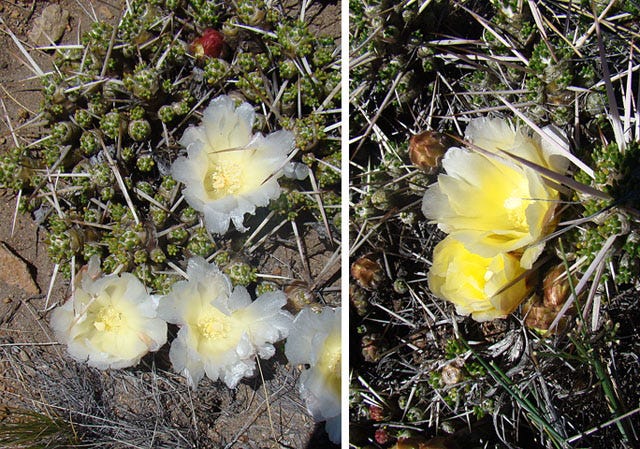
M. poeppigii is also endemic to Chile and Argentina and known to the Chileans as maihuén or hierba del guanaco, the latter which literally means “guanaco herb” or “guanaco grass”. A guanaco is one of two South American camelids. They look like llamas and we are probably right to assume that M. poeppigii forms part of its diet.
Both plants are succulents and described as forming dense fleshy cushions, with rather large spines compared to their size. The guanaco herb only reaches 10cm though.
In their native environment, spreading stands of M. poeppigii grow underneath forests of prehistoric Monkey Puzzle trees (Araucaria araucana). Maihuenia is also a very “primitive” genus. Genetic analysis shows that it diverged earlier from the Cactus family than others like the Opuntia. It lacks certain structures that means that the stems contract in drought conditions. Think how weird a shrivelled cactus would be in the desert, they generally stand proudly upright in the baking heat.
Plants in the Maihuenia genus grow in the Andes of Argentina and Chile. As you would guess, they are adapted to high altitudes with their accompanying cold temperatures and high rainfall.
“High rainfall” is a can of worms though. What do we mean by it? A high amount of rainfall concentrated over a small period or a regular amount throughout the year?
For the cacti in the Maihuenia family, the answer is the latter: that is, they are adapted to - and need - regular amounts of rainfall. M. poeppigii tolerates more water than M. patagonica and because I live in the UK with all the high rainfall that that entails, I’ll focus on M. poeppigii from this point onwards.
So how much continual rainfall are we talking?
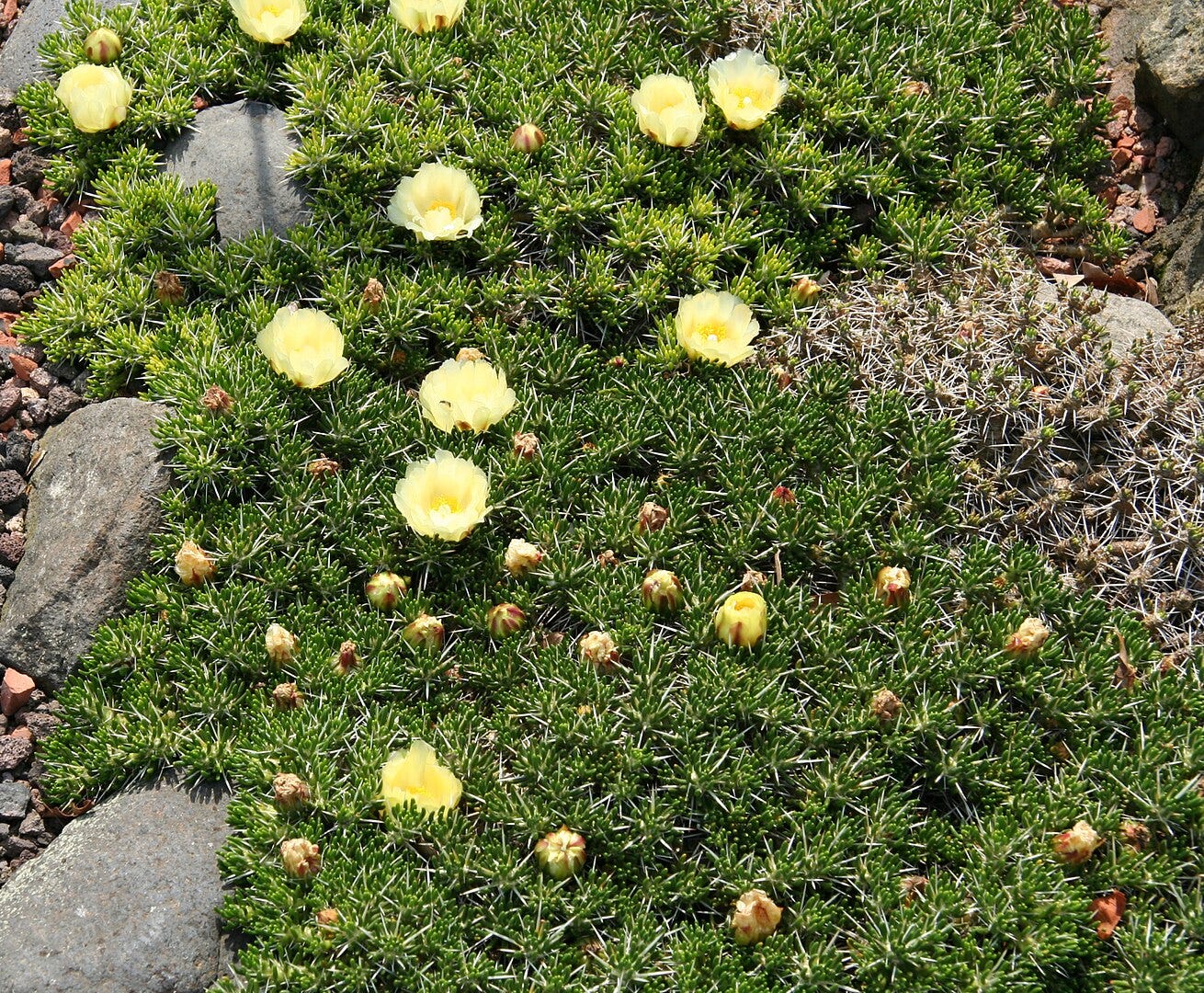
M. poeppigii can tolerate 400mm to 800mm annual precipitation!
As well a moisture tolerance, the guanco herb, as a high altitude dweller, is also happy to withstand cold down to -10C (14F) - some report it surviving down to -20C (-4F).
Let’s pause to think about this: my area in the UK has about 850mm of annual rainfall each year, and the lowest recorded temperature is -6C.
This means that, in my rainy British back garden, I can plant a perennial stand of M. poeppigii in a raised, south facing, gravel bed. I’m not even being theoretical here, I’ve seen pictures of it growing in British gardens at the same latitude as mine. The only issue might be the heat of the British summer as it never gets that hot up in the Andes. This is probably one of the few times I’ll ever type that sentence.
I guess we could stop now; a cactus that can survive in damp old Britain, wonders never cease. Of course, this substack is about food forests. You know what’s coming.
It turns out that the guanaco herb fruits prolifically. The fruits are incredibly large, up to 6 cm which is more than half the height of a mature specimen. Coupled with the long spines, we have a ready made mat to deter animals from certain areas of your food forest. Animals like my dog who sometimes poops on my strawberries.
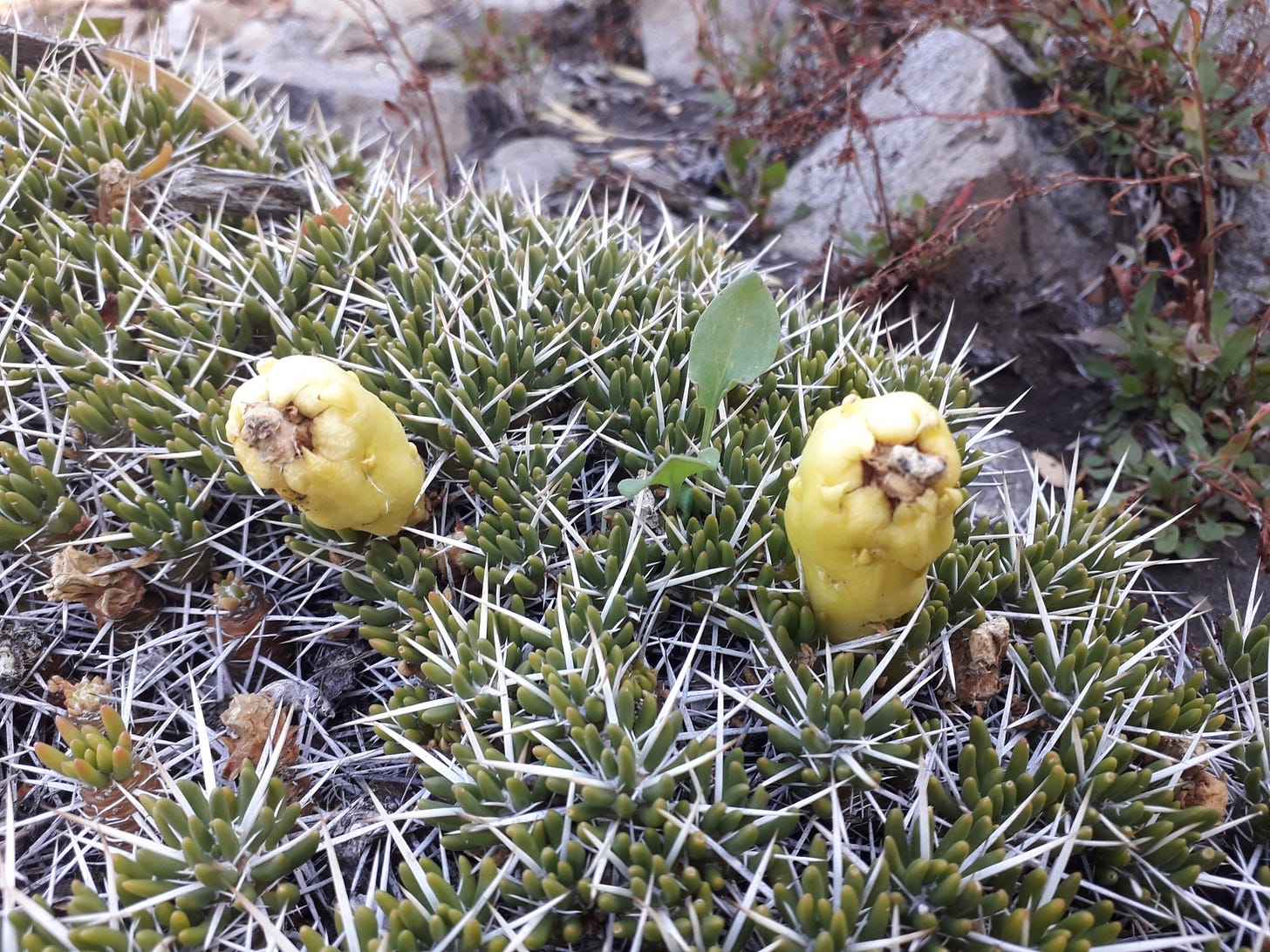
From seed, M. poeppigii can fruit in “a few” years. In this context, it is being compared to 10 years for most fruiting cactus, so, faster than average. Time to seed production is an important factor in plant domestication, and of course we will discuss the domestication of the guanaco herb.
An ideal M. poeppigii should be taller than 10cm. In a wet climate like Britain, we want to raise the height to avoid soil contamination from rain splash back and also aid in harvesting.
For the fruiting behaviour, 6cm is probably big enough, but we want to speed up the domestication process by decreasing the time to first crop.
We’d likely want to breed out the spikes too. Spikes are leaves that have become highly specialised into defensive weapons, but we could do without that thorny burden. Luckily, we don’t need to deal with scourge of glochids that plague the otherwise excellent Prickly Pear.
While we’re at it, and perhaps most importantly, we want to select for the hardiness: the most moisture tolerant and the most heat tolerant (it feels funny to want that from a cactus).
Final Thoughts
In many ways M. poeppigii has more going for it than the Opuntia genus (Prickly Pear) as a food crop, even in the wild form. Glochids are such a hazard and it is far from certain if any breeding program will permanently rid the Opuntia line of it.
and others suggest that mutagenesis (deliberating mutating the DNA by chemical or physical means) is the best way to go as the genetic machinery for glochids is likely complex and multiply redundant. With the guanaco herb, we side step that spaghetti spill and just deal with the spines.Even if we can’t breed the spines out of M. poeppigii, at least our M. domestica (what a coincidence!) will have countably few spikes that are easily visible to the naked eye!
Until next time.
References
Mention of M. poeppigii requiring rainfall in the winter
General information about M. poeppigii, such as requiring 400-800mm of annual rainfall, with very large fruit, and bearing very quickly from seed
M. poeppigii thriving on a green roof of the Denver Botanical Garden
The ever Useful Temperate Plants entry
“Primitive” and diverging early from the Cactus family, M. poeppigii is often found growing underneath forests of Monkey Puzzle

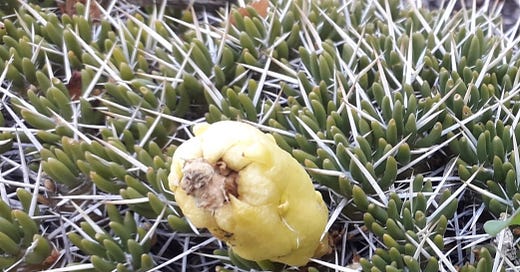


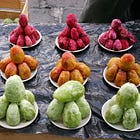
"Argent" means silver in Latin, so silverweed = argent-weed! The country Argentina was also named after the Latin word for silver, as precious metals were something the conquistadors were looking for.
I live in Port Angeles, Washington, and there are several well-established plantings of fruiting prickly pear around here.